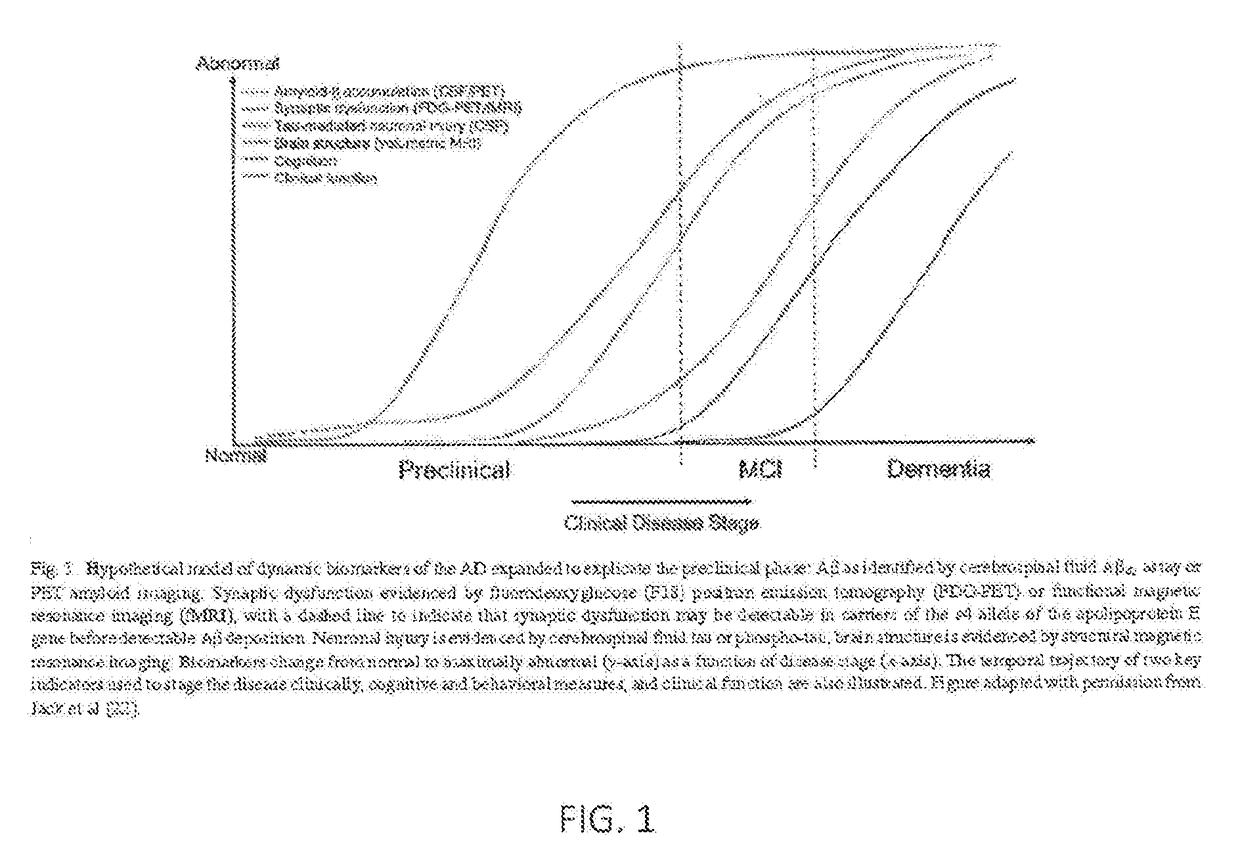Galantamine clearance of amyloid ß
a technology of amyloid ß and amyloid ß, which is applied in the direction of nervous disorders, medical preparations, drug compositions, etc., can solve the problems of -secretase inhibition to cause adverse effects, unclear role of such plaques in the etiology of the disease, and inability to service the probable and definite alzheimer's disease of 1984, etc., to achieve the effect of reducing the level of soluble toxic a
- Summary
- Abstract
- Description
- Claims
- Application Information
AI Technical Summary
Benefits of technology
Problems solved by technology
Method used
Image
Examples
Embodiment Construction
[0074]A way to determine suitable dose ranges for galantamine can be effected by assessing the concentration which promotes Aβ oligomer clearance in vitro, and to temper that with the concentration which preserves the neurite network from injury by remaining oligomers. Galantamine or a pharmaceutically acceptable salt is then administered to experimental animals to determine plasma and brain concentrations, and the plasma concentration which is associated with an effective brain concentration is applied to human subjects. In order to determine the proper dose of galantamine for groups of subjects having varying degrees of cognitive impairment, the counter-regulatory increases in CSF acetylcholinesterase may be determined. A galantamine dose will be determined to be appropriate when CSF-acetylcholinesterase does not increase more than it does when 16 to 24 mg of galantamine are given to subjects with- Alzheimer's dementia, as demonstrated by Nordberg et al, 2009, op cit. A second tes...
PUM
| Property | Measurement | Unit |
|---|---|---|
| Fraction | aaaaa | aaaaa |
| Time | aaaaa | aaaaa |
| Mass | aaaaa | aaaaa |
Abstract
Description
Claims
Application Information
 Login to View More
Login to View More - R&D
- Intellectual Property
- Life Sciences
- Materials
- Tech Scout
- Unparalleled Data Quality
- Higher Quality Content
- 60% Fewer Hallucinations
Browse by: Latest US Patents, China's latest patents, Technical Efficacy Thesaurus, Application Domain, Technology Topic, Popular Technical Reports.
© 2025 PatSnap. All rights reserved.Legal|Privacy policy|Modern Slavery Act Transparency Statement|Sitemap|About US| Contact US: help@patsnap.com



